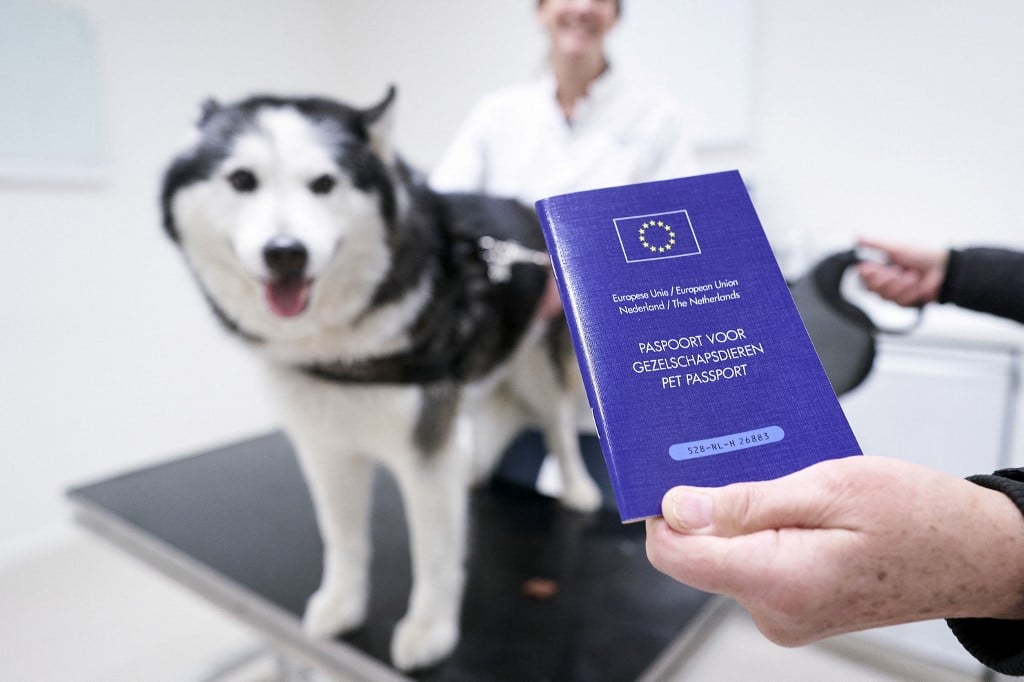EXPLAINED: How to move to Austria with your pets

Austria has a reputation for being a pet-friendly country overall. But what about when it comes to getting your furry friend here?
Moving to Austria can be exciting and daunting all at the same time, especially if you’re moving family members – including four-legged ones. The good news is that moving pets to Austria can be fairly straightforward. But you’ll need to prepare a bit ahead of time – even if you’re moving from another EU country.
The paperwork does differ a bit though depending on whether you’re bringing your pet from another EU country or if you’re taking them into Austria from outside the EU. Here are the measures you’ll have to take if you’re moving your dog, cat, or ferret. These three animals are the most clearcut when it comes to moving.
Moving your pet to Austria from another EU country
If you’re moving your pet into Austria from another EU country, a member of the EEA like Norway, or a non-EU state that harmonises with EU rules, such as Switzerland – the most important thing you’ll need is an EU Pet Passport.
In most EU countries, you’ll be able to get one of these from any practicing veterinarian or from schools of veterinary medicine for any pet that’s older than three months.
Most importantly, the pet passport will include details of when your dog, cat, or ferret had their first rabies shot – as well as any additional boosters. It’s important to keep in mind that your pet is only considered to be vaccinated against rabies if at least 21 days has passed since they got their shot.

A dog owner shows her little friend's EU pet passport - this one issued by the Netherlands. Moving your pet withing the EU is relatively simple with one. (Photo by Phil NIJHUIS / ANP / AFP)
Pet passports also have to contain records of previous keepers and owners and have a picture of the animal. They also contain the animal’s name, age, gender, breed, and ID number – or microchip code. Your pet will need to have a microchip identifier as well.
You can travel with up to five pets, but each one must have its own pet passport. You must also typically be with your own furry best friend. You can provide a legal letter authorising someone else to travel with them. If you do this though, you’re required to be reunited with your dog, cat, or ferret within five days.
Once your pet has their passport, it’s good for their whole lifetime – as long as you keep their rabies vaccinations up to date.
With that in mind, taking your pet on holiday within the EU is a pretty straightforward process. Some countries though, like Finland or Malta though – will require you to provide additional documentation that little Fido or Spot has been checked for tapeworms.
READ ALSO: Reader question: Are certain dog and cat breeds banned in Austria?
Moving with your pet from outside the EU
This one is a bit more complicated.
First up, your pet will need to be marked with a microchip, unless they have a clearly readable tattoo from before July 3rd, 2011. This means tattoos are valid only for the oldest of pets.
Next, if your pet doesn’t have an EU pet passport, you’ll need to get an animal health certificate from the country where they’re currently based before moving to Austria, containing the date of their valid rabies vaccinations. Any rabies vaccinations will have had to be carried out at least 21 days prior to your pet entering Austria to be valid.
Depending on where you’re coming from, the animal health certificate may also need to have the date and result of a rabies serological test. These tests have to be done at least 30 days after vaccination and at least three months before you arrive in Austria.

There's more hoops to jump through if moving little Spot to Austria from a non-EU country. But it's possible if managed carefully. Image by atticus895 from Pixabay
Whether you need this test or not depends on where you’re coming from though, as the EU has different agreements with different countries governing animal health. For example, if you’re moving your pet from the UK, you don’t need to provide one of these tests as long as you’ve kept your pet’s rabies vaccinations up to date. This also goes for several other countries, including Australia, Canada, and the US.
It’s best to check with information pages either from the government of where you’re coming from – if they exist, such as this one from the UK – or with the website of your relevant Austrian mission abroad to see if pets from your current country need this test.
Once you have all this lined up, you’ll need to visit a veterinarian no earlier than 10 days before you travel to Austria in order to pick up your pet’s animal health certificate.
You may need to plan carefully to book vaccination and test appointments at the right time for the animal health certificate to be valid.
You also won’t be able to move very young pets, as no rabies vaccine performed before they’re 12 weeks old will be considered valid.
Finally, you personally – or someone who has your written authorisation – must accompany little Fido into Austria and see a customs officer, who will stamp the animal health certificate. In cases where you don’t accompany them yourself, you need to have arrived in Austria no later than five days before or five days after they do.
What should I do for my dog, cat, or ferret once in Austria?
The stamped animal health certificate your furball came in on will be valid in Austria for up to four months.
During that time, you should head to an Austrian vet so you can convert that animal health certificate into an EU Pet Passport – which is then good for your pet’s lifetime.

You'll make travel easier with your pet if you get them their own pet passport once you and your furry family members are settled into Austria. (Photo by Paul Hanaoka on Unsplash)
Once they have a passport of their very own, it’ll be much easier for you to travel with them in the future – either around the EU or when re-entering if from abroad.
If your pet’s a dog, you’ll also have to register them with your local authority, pay a dog tax, and ensure they have public liability insurance.
READ ALSO: EXPLAINED: Everything you need to know about having pets in Austria
Comments
See Also
Moving to Austria can be exciting and daunting all at the same time, especially if you’re moving family members – including four-legged ones. The good news is that moving pets to Austria can be fairly straightforward. But you’ll need to prepare a bit ahead of time – even if you’re moving from another EU country.
The paperwork does differ a bit though depending on whether you’re bringing your pet from another EU country or if you’re taking them into Austria from outside the EU. Here are the measures you’ll have to take if you’re moving your dog, cat, or ferret. These three animals are the most clearcut when it comes to moving.
Moving your pet to Austria from another EU country
If you’re moving your pet into Austria from another EU country, a member of the EEA like Norway, or a non-EU state that harmonises with EU rules, such as Switzerland – the most important thing you’ll need is an EU Pet Passport.
In most EU countries, you’ll be able to get one of these from any practicing veterinarian or from schools of veterinary medicine for any pet that’s older than three months.
Most importantly, the pet passport will include details of when your dog, cat, or ferret had their first rabies shot – as well as any additional boosters. It’s important to keep in mind that your pet is only considered to be vaccinated against rabies if at least 21 days has passed since they got their shot.

Pet passports also have to contain records of previous keepers and owners and have a picture of the animal. They also contain the animal’s name, age, gender, breed, and ID number – or microchip code. Your pet will need to have a microchip identifier as well.
You can travel with up to five pets, but each one must have its own pet passport. You must also typically be with your own furry best friend. You can provide a legal letter authorising someone else to travel with them. If you do this though, you’re required to be reunited with your dog, cat, or ferret within five days.
Once your pet has their passport, it’s good for their whole lifetime – as long as you keep their rabies vaccinations up to date.
With that in mind, taking your pet on holiday within the EU is a pretty straightforward process. Some countries though, like Finland or Malta though – will require you to provide additional documentation that little Fido or Spot has been checked for tapeworms.
READ ALSO: Reader question: Are certain dog and cat breeds banned in Austria?
Moving with your pet from outside the EU
This one is a bit more complicated.
First up, your pet will need to be marked with a microchip, unless they have a clearly readable tattoo from before July 3rd, 2011. This means tattoos are valid only for the oldest of pets.
Next, if your pet doesn’t have an EU pet passport, you’ll need to get an animal health certificate from the country where they’re currently based before moving to Austria, containing the date of their valid rabies vaccinations. Any rabies vaccinations will have had to be carried out at least 21 days prior to your pet entering Austria to be valid.
Depending on where you’re coming from, the animal health certificate may also need to have the date and result of a rabies serological test. These tests have to be done at least 30 days after vaccination and at least three months before you arrive in Austria.

Whether you need this test or not depends on where you’re coming from though, as the EU has different agreements with different countries governing animal health. For example, if you’re moving your pet from the UK, you don’t need to provide one of these tests as long as you’ve kept your pet’s rabies vaccinations up to date. This also goes for several other countries, including Australia, Canada, and the US.
It’s best to check with information pages either from the government of where you’re coming from – if they exist, such as this one from the UK – or with the website of your relevant Austrian mission abroad to see if pets from your current country need this test.
Once you have all this lined up, you’ll need to visit a veterinarian no earlier than 10 days before you travel to Austria in order to pick up your pet’s animal health certificate.
You may need to plan carefully to book vaccination and test appointments at the right time for the animal health certificate to be valid.
You also won’t be able to move very young pets, as no rabies vaccine performed before they’re 12 weeks old will be considered valid.
Finally, you personally – or someone who has your written authorisation – must accompany little Fido into Austria and see a customs officer, who will stamp the animal health certificate. In cases where you don’t accompany them yourself, you need to have arrived in Austria no later than five days before or five days after they do.
What should I do for my dog, cat, or ferret once in Austria?
The stamped animal health certificate your furball came in on will be valid in Austria for up to four months.
During that time, you should head to an Austrian vet so you can convert that animal health certificate into an EU Pet Passport – which is then good for your pet’s lifetime.

Once they have a passport of their very own, it’ll be much easier for you to travel with them in the future – either around the EU or when re-entering if from abroad.
If your pet’s a dog, you’ll also have to register them with your local authority, pay a dog tax, and ensure they have public liability insurance.
READ ALSO: EXPLAINED: Everything you need to know about having pets in Austria
Join the conversation in our comments section below. Share your own views and experience and if you have a question or suggestion for our journalists then email us at [email protected].
Please keep comments civil, constructive and on topic – and make sure to read our terms of use before getting involved.
Please log in here to leave a comment.